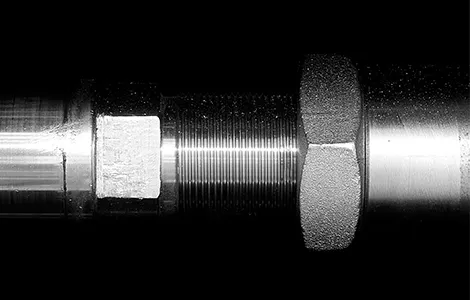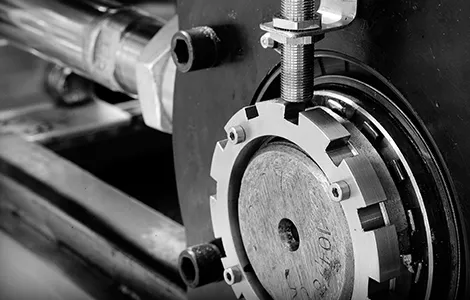Pastillators vs. Flakers: Choosing the Right Solidification Method for Your Chemical Products
August 26, 2025
In chemical manufacturing, the solidification stage is much more than a finishing process. It influences product quality, downstream handling, environmental performance, and even operating costs. Two of the most common techniques, pastillation and flacking, are well-established methods, but each is suited to different materials, output requirements, and quality standards.
Choosing the right approach is essential to achieve consistent performance, maximise yield, and ensure your product meets market requirements. This blog explores how each process works, where each excels, and how to determine which is the right fit for your operation.
Understanding Pastillation
Pastillation is a precision solidification method in which molten product is deposited in droplets onto a continuously moving steel belt. As the belt passes through a cooling zone, each droplet solidifies into a smooth, uniform pastille.
This process is particularly valuable for temperature-sensitive or high-value products. By controlling droplet size, spacing, and cooling rate, pastillation ensures consistent particle shape and size. This uniformity improves dosing accuracy, reduces dust during handling, and minimises waste due to off-spec material.
Industries producing waxes, sulphur products, and food-grade additives often favour pastillation for its ability to maintain product quality. In addition, the smooth surface of the steel belt ensures reliable product release, reducing the need for cleaning and minimising production interruptions.
Understanding Pelletising
Pelletising is a robust and versatile process that casts a molten sheet of product onto a cooling belt where it solidifies and is then flaked using a breaker. Unlike pastillation, which shapes droplets directly, flaking uses a casting device to apply an even layer of molten product. The feeding device is selected based on the consistency and viscosity of the product.
This method is often chosen for high-volume production where the emphasis is on throughput and quantity. Flakers are well suited to materials that require robust particles for transport or bulk storage, such as fertilisers, resins, and polymers.
The outfeed product breaking equipment can also be adapted to produce different flake sizes, offering flexibility for manufacturers supplying various markets or applications.
Key Differences Between the Two Methods
While both pastillators and flakers solidify product efficiently, their performance profiles are distinctly different. Pastillation is a precision method that prioritises uniformity and clean product release, making it ideal for speciality applications. Flaking, on the other hand, prioritises production volume and product robustness, lending itself to high-capacity operations where product uniformity is less critical.
The choice of method often comes down to a balance between quality requirements, material behaviour, and output demands. Temperature-sensitive materials, for example, are often better suited to pastillation due to the gentle cooling and reduced mechanical handling. In contrast, less viscous molten product, transported in large quantities may benefit from the ease of flaking.
Factors to Consider When Choosing a Method
Selecting the right process begins with understanding your product and your operational priorities. Material characteristics, such as viscosity, cooling behaviour, and sensitivity to temperature, will strongly influence which method is most suitable.
End-use requirements are equally important. Products destined for industries that demand precise dosing, and clean handling may require the consistency of pastillation. Conversely, if your focus is on high-capacity production flaking may be the more efficient solution.
Environmental and operational considerations also play a role. Pastillation systems tend to require less cleaning and produce less waste, while flaking can leverage economies of scale to reduce per-unit costs in high-output scenarios.
PACE Expertise in Solidification Solutions
At PACE, we work closely with manufacturers across the chemical industry to assess these factors and recommend the most suitable solidification approach. While we specialise both casting methods as we understand that every product is unique. Our process begins with a detailed evaluation of your material, production capacity, and performance goals to ensure the chosen system aligns with your operational needs.
Both pastillation and flaking are proven methods for transforming chemical products into stable, easily handled forms. The decision between them depends on product characteristics, quality expectations, and operational priorities. A well-informed choice can improve efficiency, reduce waste, and enhance overall process performance.
For expert guidance on selecting the right solidification method for your operation, contact PACE today.
FAQs
How do environmental regulations influence the choice between pastillation and flaking?
Environmental considerations such as dust control, wastewater handling, and energy efficiency can determine the most suitable process. Pastillation typically produces less airborne dust and is easier to integrate into closed-loop cooling systems, which can simplify compliance in regulated industries.
What hidden costs should manufacturers consider beyond installation?
Beyond purchase price, manufacturers should factor in energy consumption, cleaning downtime, spare parts availability, and operator training. Pastillation can reduce cleaning-related downtime, however flaking devices are simpler and require less maintenance.
Which method offers greater flexibility for changing product types?
Pastillation generally adapts more easily to different product formulations, particularly for speciality chemicals or seasonal production changes. Flakers can handle multiple products but may require reconfiguration or cleaning between runs.
How does product storage or transport method affect the choice?
If the product will be stored in bulk silos or transported over long distances, flaking may be more advantageous. For packaged products or precision dosing applications, pastillation offers advantages in uniformity and flow.
Can production lines integrate both methods for different products?
Yes, but it requires careful planning of layout, cooling systems, and product handling equipment. In some cases, hybrid plants use pastillation for premium or speciality grades and flaking for high-volume standard products.

